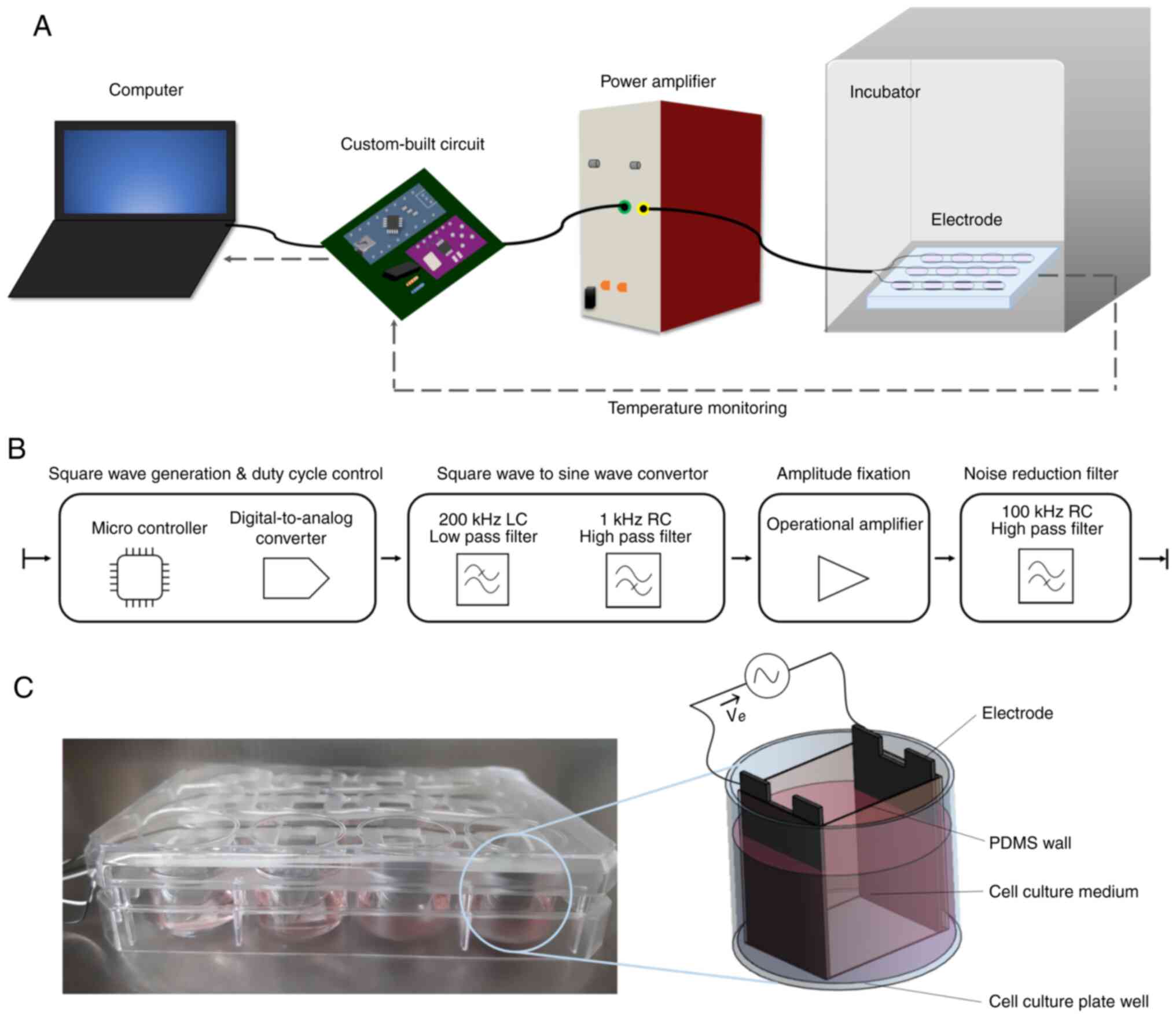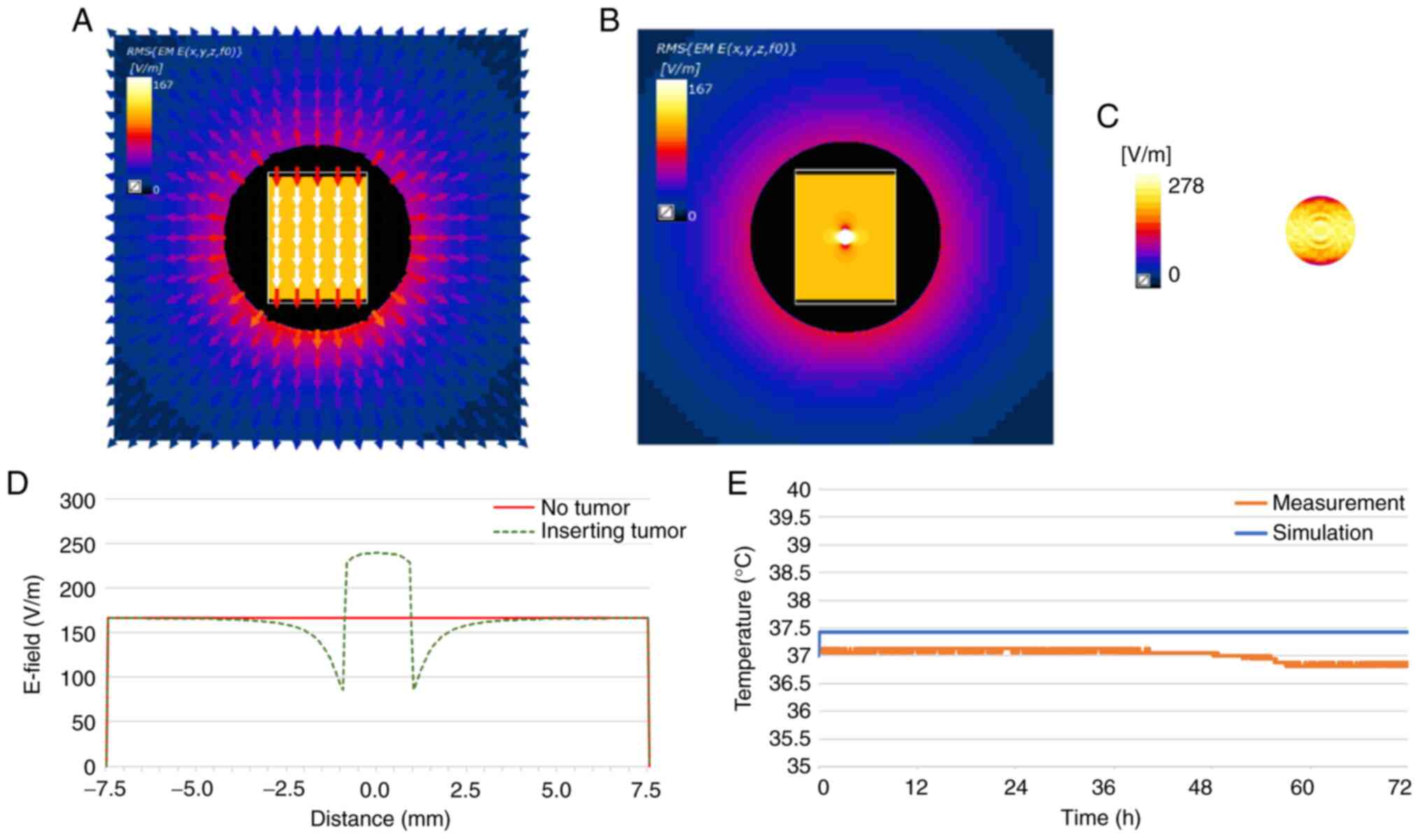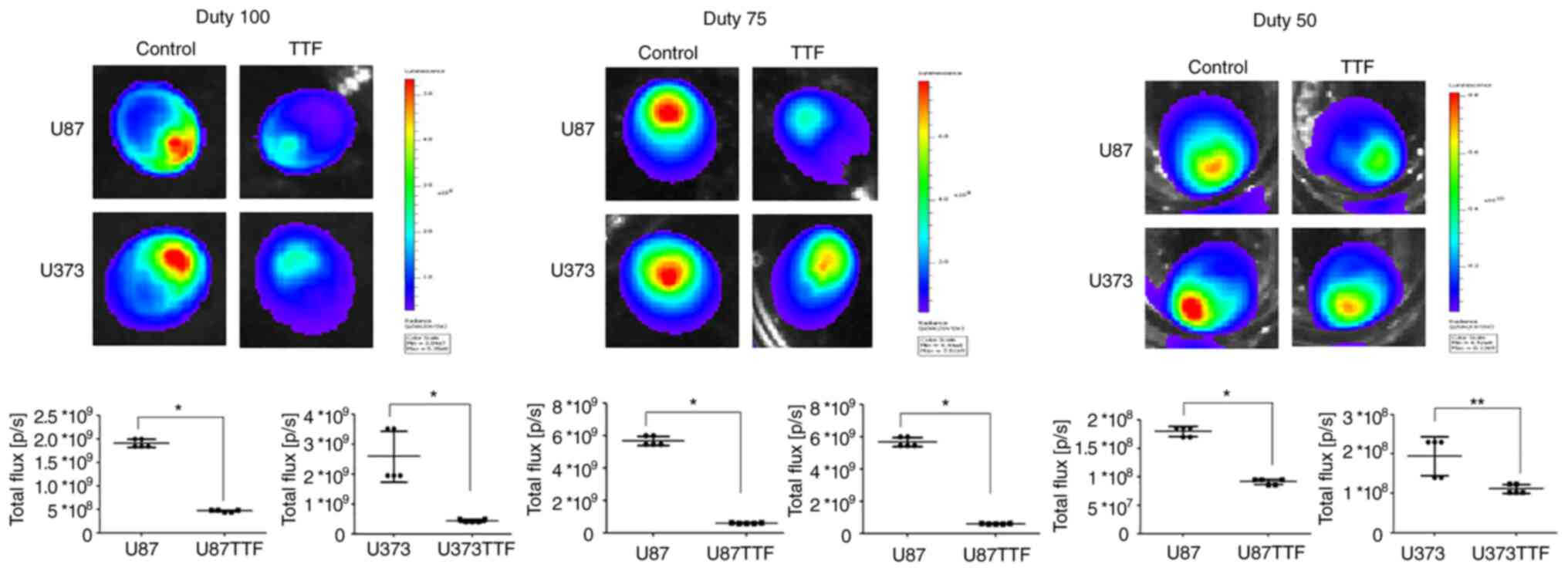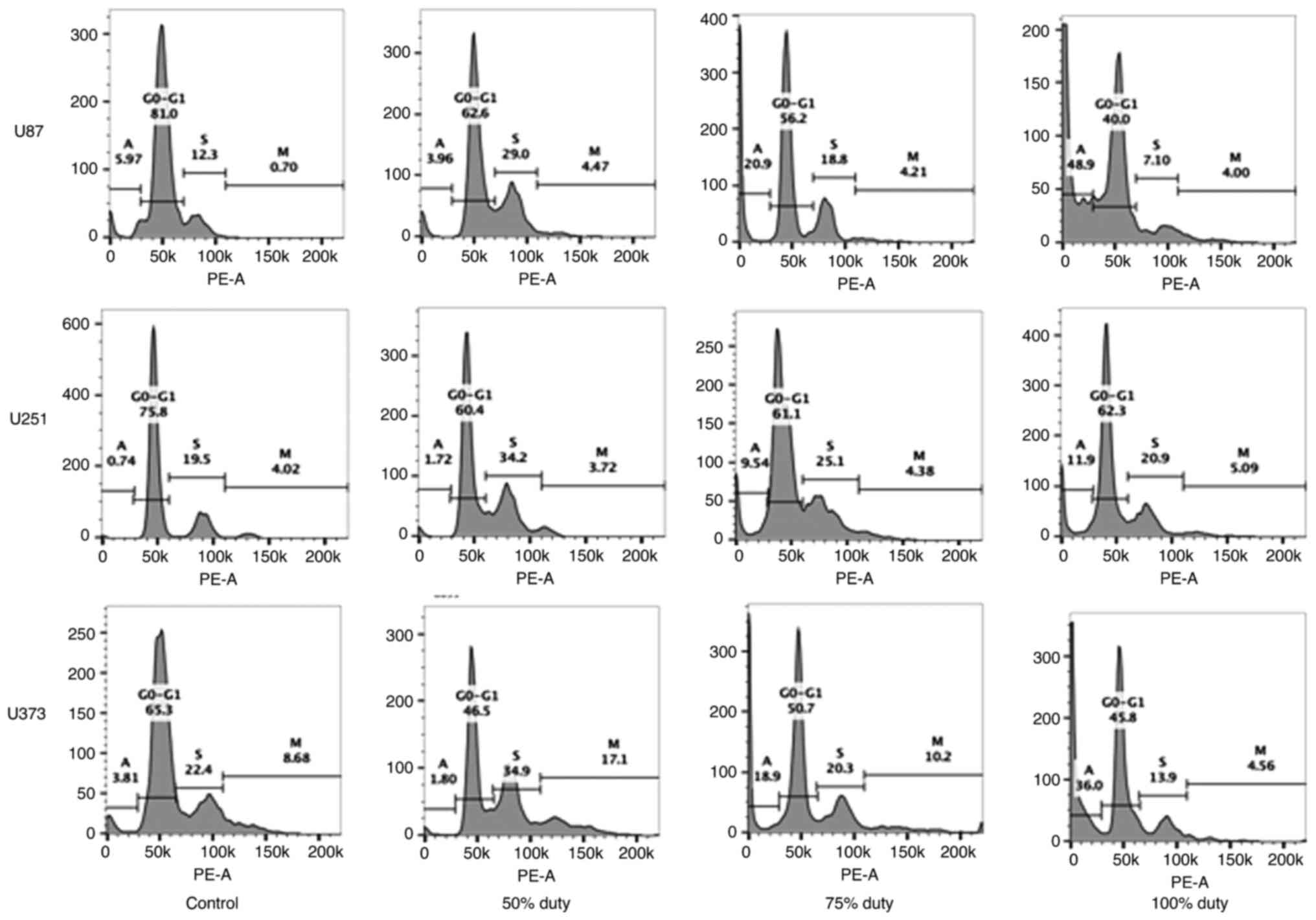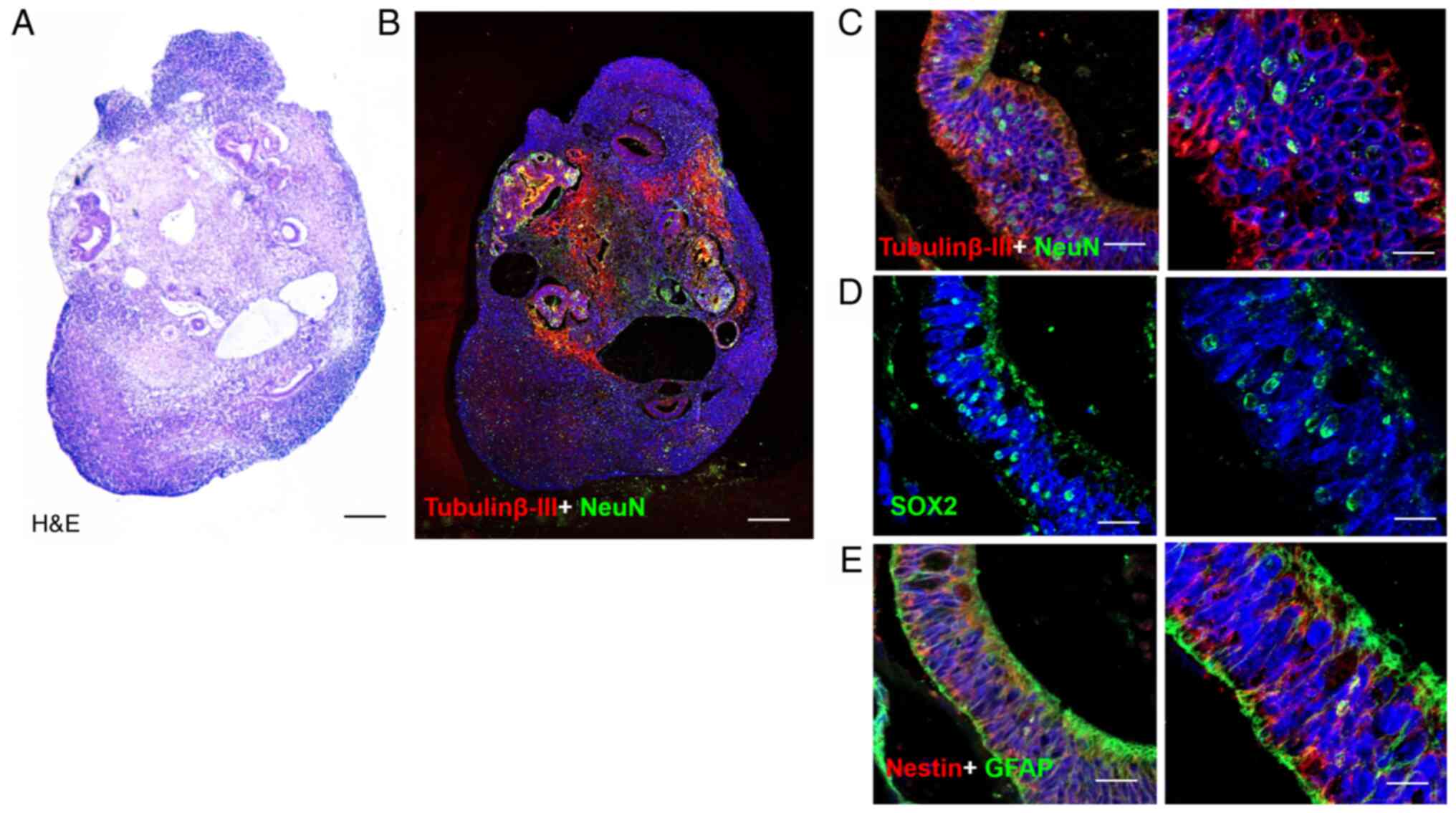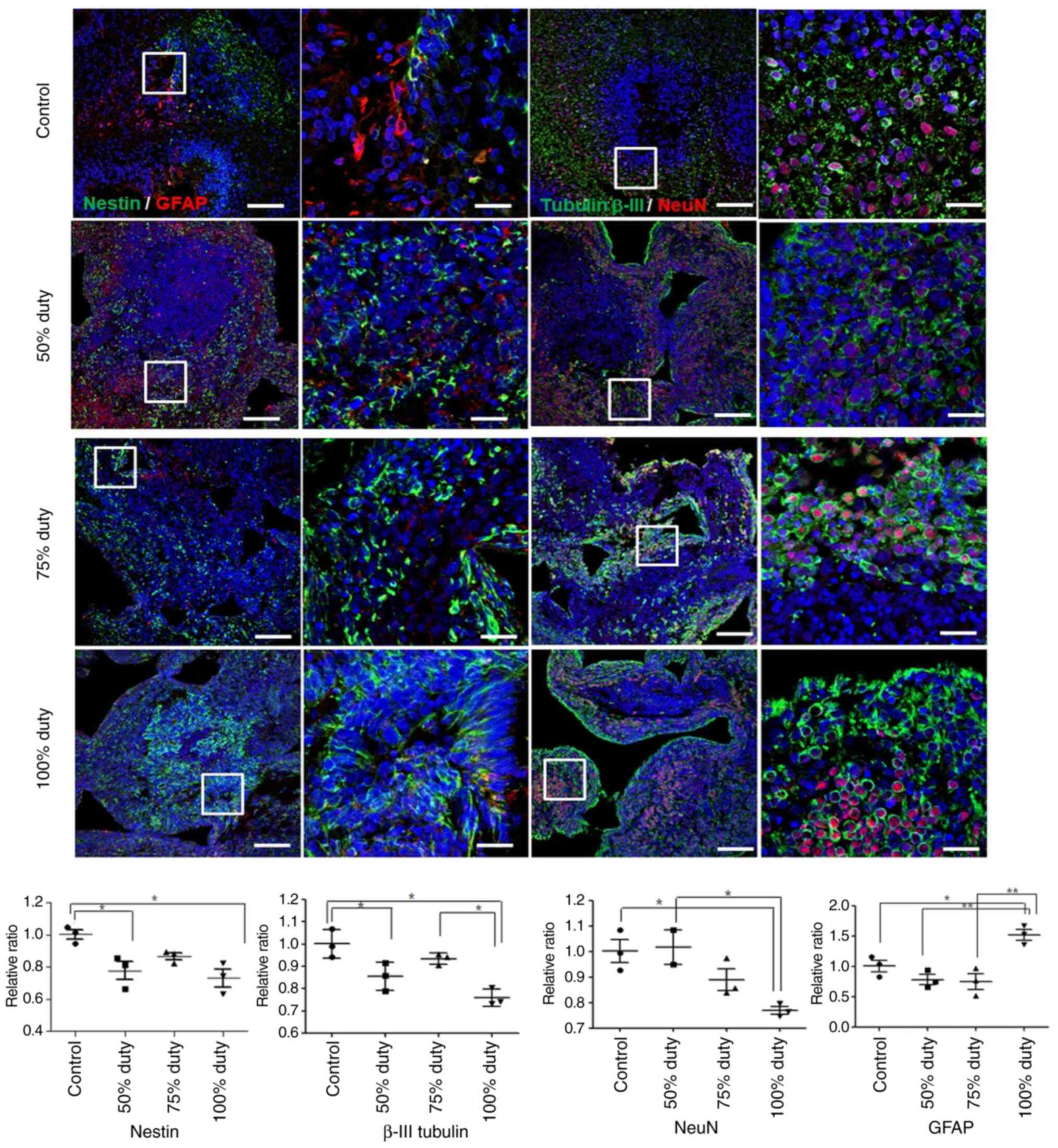|
1
|
Kirson ED, Gurvich Z, Schneiderman R,
Dekel E, Itzhaki A, Wasserman Y, Schatzberger R and Palti Y:
Disruption of cancer cell replication by alternating electric
fields. Cancer Res. 64:3288–3295. 2004. View Article : Google Scholar : PubMed/NCBI
|
|
2
|
Neuhaus E, Zirjacks L, Ganser K, Klumpp L,
Schüler U, Zips D, Eckert F and Huber SM: Alternating electric
fields (TTFields) activate Cav 1.2 channels in human
glioblastoma cells. Cancers. 11:1102019. View Article : Google Scholar
|
|
3
|
Trusheim J, Dunbar E, Battiste J, Iwamoto
F, Mohile N, Damek D, Bota DA and Connelly J: A state-of-the-art
review and guidelines for tumor treating fields treatment planning
and patient follow-up in glioblastoma. CNS Oncol. 6:29–43. 2017.
View Article : Google Scholar
|
|
4
|
Stupp R, Wong ET, Kanner AA, Steinberg D,
Engelhard H, Heidecke V, Kirson ED, Taillibert S, Liebermann F,
Dbalý V, et al: NovoTTF-100A versus physician's choice chemotherapy
in recurrent glioblastoma: A randomised phase III trial of a novel
treatment modality. Eur J Cancer. 48:2192–2202. 2012. View Article : Google Scholar : PubMed/NCBI
|
|
5
|
Stupp R, Taillibert S, Kanner A, Read W,
Steinberg D, Lhermitte B, Toms S, Idbaih A, Ahluwalia MS, Fink K,
et al: Effect of tumor-treating fields plus maintenance
temozolomide vs maintenance temozolomide alone on survival in
patients with glioblastoma: A randomized clinical trial. JAMA.
318:2306–2316. 2017. View Article : Google Scholar : PubMed/NCBI
|
|
6
|
Stupp R, Taillibert S, Kanner AA, Kesari
S, Steinberg DM, Toms SA, Taylor LP, Lieberman F, Silvani A, Fink
KL, et al: Maintenance therapy with tumor-treating fields plus
temozolomide vs temozolomide alone for glioblastoma: A randomized
clinical trial. JAMA. 314:2535–2543. 2015. View Article : Google Scholar
|
|
7
|
Giladi M, Schneiderman RS, Voloshin T,
Porat Y, Munster M, Blat R, Sherbo S, Bomzon Z, Urman N, Itzhaki A,
et al: Mitotic spindle disruption by alternating electric fields
leads to improper chromosome segregation and mitotic catastrophe in
cancer cells. Sci Rep. 5:180462015. View Article : Google Scholar : PubMed/NCBI
|
|
8
|
Hottinger AF, Pacheco P and Stupp R: Tumor
treating fields: A novel treatment modality and its use in brain
tumors. Neuro Oncol. 18:1338–1349. 2016. View Article : Google Scholar : PubMed/NCBI
|
|
9
|
Gera N, Yang A, Holtzman TS, Lee SX, Wong
ET and Swanson KD: Tumor treating fields perturb the localization
of septins and cause aberrant mitotic exit. PLoS One.
10:e01252692015. View Article : Google Scholar :
|
|
10
|
Kirson ED, Dbalý V, Tovaryš F, Vymazal J,
Soustiel JF, Itzhaki A, Mordechovich D, Steinberg-Shapira S,
Gurvich Z, Schneiderman R, et al: Alternating electric fields
arrest cell proliferation in animal tumor models and human brain
tumors. Proc Natl Acad Sci USA. 104:10152–10157. 2007. View Article : Google Scholar : PubMed/NCBI
|
|
11
|
Giladi M, Voloshin T, Shteingauz A,
Munster M, Blat R, Porat Y, Schneiderman RS, Cahal S, Itzhaki A,
Kirson E, et al: Alternating electric fields (TTFields) induce
immunogenic cell death resulting in enhanced antitumor efficacy
when combined with anti-PD-1 therapy. J Immunol. 196(Suppl 1):
75.262016.
|
|
12
|
Silginer M, Weller M, Stupp R and Roth P:
Biological activity of tumor treating fields in preclinical glioma
models. Cell Death Dis. 8:e27532017. View Article : Google Scholar
|
|
13
|
Tuszynski JA, Wenger C, Friesen DE and
Preto J: An overview of sub-cellular mechanisms involved in the
action of TTFields. Int J Environ Res Public Health. 13:11282016.
View Article : Google Scholar :
|
|
14
|
Wenger C, Miranda PC, Salvador R,
Thielscher A, Bomzon Z, Giladi M, Mrugala MM and Korshoej AR: A
review on tumor-treating fields (TTFields): Clinical implications
inferred from computational modeling. IEEE Rev Biomed Eng.
11:195–207. 2018. View Article : Google Scholar : PubMed/NCBI
|
|
15
|
Pampaloni F, Reynaud EG and Stelzer EH:
The third dimension bridges the gap between cell culture and live
tissue. Nat Rev Mol Cell Biol. 8:839–845. 2007. View Article : Google Scholar : PubMed/NCBI
|
|
16
|
Vinci M, Gowan S, Boxall F, Patterson L,
Zimmermann M, Lomas C, Mendiola M, Hardisson D and Eccles SA:
Advances in establishment and analysis of three-dimensional tumor
spheroid-based functional assays for target validation and drug
evaluation. BMC Biol. 10:292012. View Article : Google Scholar : PubMed/NCBI
|
|
17
|
Lancaster MA, Renner M, Martin CA, Wenzel
D, Bicknell LS, Hurles ME, Homfray T, Penninger JM, Jackson AP and
Knoblich JA: Cerebral organoids model human brain development and
microcephaly. Nature. 501:373–379. 2013. View Article : Google Scholar : PubMed/NCBI
|
|
18
|
Di Lullo E and Kriegstein AR: The use of
brain organoids to investigate neural development and disease. Nat
Rev Neurosci. 18:573–584. 2017. View Article : Google Scholar :
|
|
19
|
Kanner AA, Wong ET, Villano JL and Ram Z;
EF-11 Investigators: Post-hoc analyses of intention-to-treat
population in phase III comparison of NovoTTF-100A™ system versus
best physician's choice chemotherapy. Semin Oncol. 41(Suppl 6):
S25–S34. 2014. View Article : Google Scholar
|
|
20
|
Benson L: Tumor treating fields
technology: Alternating electric field therapy for the treatment of
solid tumors. Semin Oncol Nurs. 34:137–150. 2018. View Article : Google Scholar : PubMed/NCBI
|
|
21
|
Lacouture ME, Davis ME, Elzinga G,
Butowski N, Tran D, Villano JL, DiMeglio L, Davies AM and Wong ET:
Characterization and management of dermatologic adverse events with
the NovoTTF-100A System, a novel anti-mitotic electric field device
for the treatment of recurrent glioblastoma. Semin Oncol. 41(Suppl
4): S1–S14. 2014. View Article : Google Scholar : PubMed/NCBI
|
|
22
|
Toms SA, Kim CY, Nicholas G and Ram Z:
Increased compliance with tumor treating fields therapy is
prognostic for improved survival in the treatment of glioblastoma:
A subgroup analysis of the EF-14 phase III trial. J Neurooncol.
141:467–473. 2019. View Article : Google Scholar :
|
|
23
|
Berkelmann L, Bader A, Meshksar S, Dierks
A, Majernik GH, Krauss JK, Schwabe K, Manteuffel D and Ngezahayo A:
Tumour-treating fields (TTFields): Investigations on the mechanism
of action by electromagnetic exposure of cells in
telophase/cytokinesis. Sci Rep. 9:76322019. View Article : Google Scholar
|
|
24
|
Plonsey R and Heppner DB: Considerations
of quasistationarity in electrophysiological systems. Bull Math
Biophys. 29:657–664. 1967. View Article : Google Scholar : PubMed/NCBI
|
|
25
|
Pennes HH: Analysis of tissue and arterial
blood temperatures in the resting human forearm. J Appl Physiol
(1985). 85:5–34. 1998. View Article : Google Scholar
|
|
26
|
Korshoej AR, Hansen FL, Thielscher A, von
Oettingen GB and Sørensen JC: Impact of tumor position,
conductivity distribution and tissue homogeneity on the
distribution of tumor treating fields in a human brain: A computer
modeling study. PLoS One. 12:e01792142017. View Article : Google Scholar : PubMed/NCBI
|
|
27
|
Yang SH, Hong YK, Jeun SS, Kim IS, Hong
JT, Sung JH, Son BC, Lee SW, Kim MC and Lee KS: Assessment of
cetuximab efficacy by bioluminescence monitoring of intracranial
glioblastoma xenograft in mouse. J Neurooncol. 95:23–28. 2009.
View Article : Google Scholar : PubMed/NCBI
|
|
28
|
Kim Y, Park N, Rim YA, Nam Y, Jung H, Lee
K and Ju JH: Establishment of a complex skin structure via layered
co-culture of keratinocytes and fibroblasts derived from induced
pluripotent stem cells. Stem Cell Res Ther. 9:2172018. View Article : Google Scholar : PubMed/NCBI
|
|
29
|
Maxim Integrated Programmable Resolution
1-Wire Digital Thermometer. Maxim Integrated Products, Inc; San
Jose, CA: 2019, https://datasheets.maximintegrated.com/en/ds/DS18B20.pdf.
|
|
30
|
Gatson NT, Barnholtz-Sloan J, Drappatz J,
Henriksson R, Hottinger AF, Hinoul P, Kruchko C, Puduvalli VK, Tran
DD, Wong ET, et al: Tumor treating fields for glioblastoma therapy
during the COVID-19 pandemic. Front Oncol. 11:6797022021.
View Article : Google Scholar : PubMed/NCBI
|
|
31
|
Mehta G, Hsiao AY, Ingram M, Luker GD and
Takayama S: Opportunities and challenges for use of tumor spheroids
as models to test drug delivery and efficacy. J Control Release.
164:192–204. 2012. View Article : Google Scholar : PubMed/NCBI
|
|
32
|
Shi W, Blumenthal DT, Oberheim Bush NA,
Kebir S, Lukas RV, Muragaki Y, Zhu JJ and Glas M: Global
post-marketing safety surveillance of tumor treating fields
(TTFields) in patients with high-grade glioma in clinical practice.
J Neurooncol. 148:489–500. 2020. View Article : Google Scholar :
|
|
33
|
Lewis EM, Kaushik K, Sandoval LA, Antony
I, Dietmann S and Kroll KL: Epigenetic regulation during human
cortical development: Seqing answers from the brain to the
organoid. Neurochem Int. 147:1050392021. View Article : Google Scholar
|
|
34
|
Aguilar AA, Ho MC, Chang E, Carlson KW,
Natarajan A, Marciano T, Bomzon Z and Patel CB: Permeabilizing cell
membranes with electric fields. Cancers (Basel). 13:22832021.
View Article : Google Scholar
|
|
35
|
Carlsson J and Acker H: Relations between
pH, oxygen partial pressure and growth in cultured cell spheroids.
Int J Cancer. 42:715–720. 1988. View Article : Google Scholar : PubMed/NCBI
|
|
36
|
Khaitan D, Chandna S, Arya MB and
Dwarakanath BS: Establishment and characterization of multicellular
spheroids from a human glioma cell line; Implications for tumor
therapy. J Transl Med. 4:122006. View Article : Google Scholar :
|
|
37
|
Dezonne RS, Sartore RC, Nascimento JM,
Saia-Cereda VM, Romão LF, Alves-Leon SV, Souza JM, Martins-de-Souza
D, Rehen SK and Gomes FC: Derivation of functional human astrocytes
from cerebral organoids. Sci Rep. 7:450912017. View Article : Google Scholar :
|
|
38
|
Siracusa R, Fusco R and Cuzzocrea S:
Astrocytes: Role and functions in brain pathologies. Front
Pharmacol. 10:11142019. View Article : Google Scholar : PubMed/NCBI
|
|
39
|
Khakh BS and Sofroniew MV: Diversity of
astrocyte functions and phenotypes in neural circuits. Nat
Neurosci. 18:942–952. 2015. View Article : Google Scholar
|
|
40
|
Ouyang YB, Xu L, Lu Y, Sun X, Yue S, Xiong
XX and Giffard RG: Astrocyte-enriched miR-29a targets PUMA and
reduces neuronal vulnerability to forebrain ischemia. Glia.
61:1784–1794. 2013. View Article : Google Scholar : PubMed/NCBI
|















